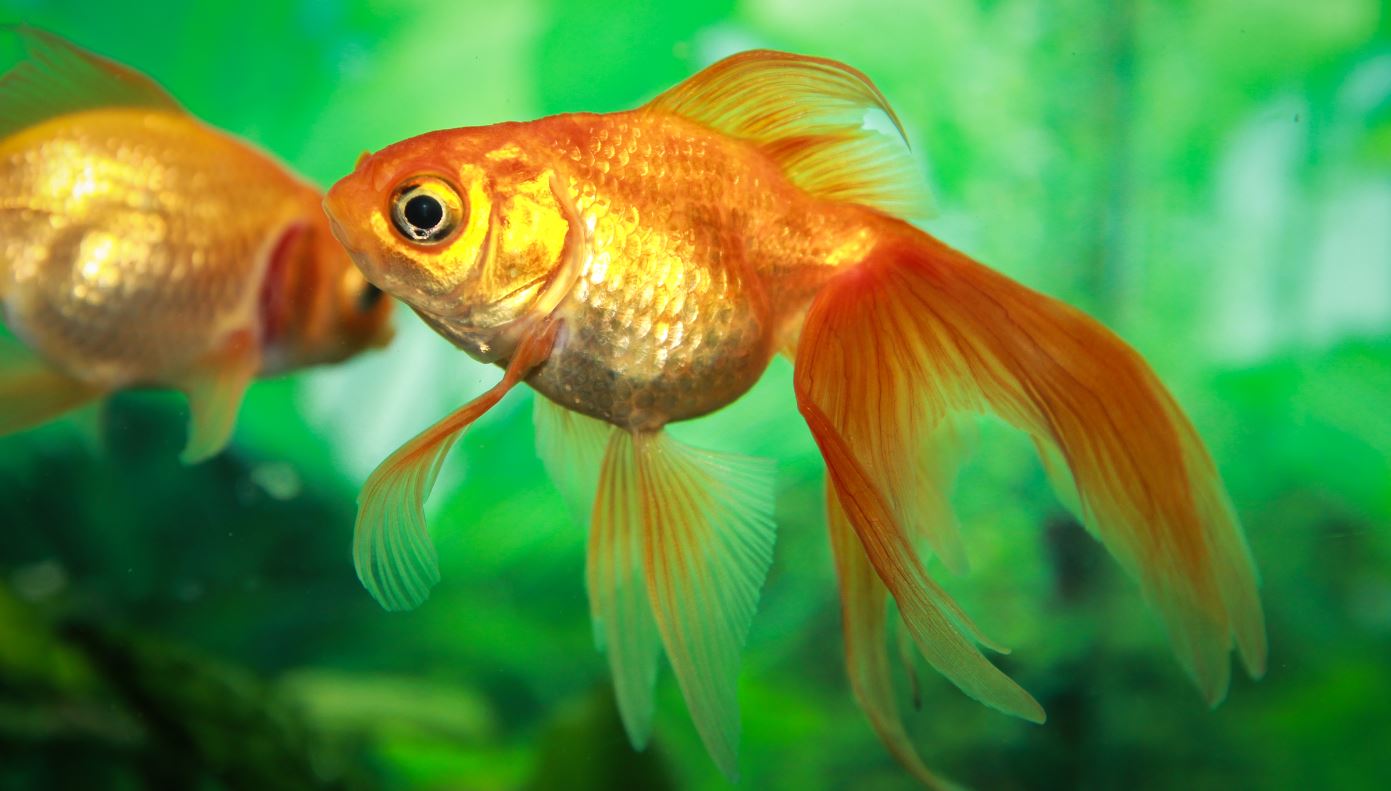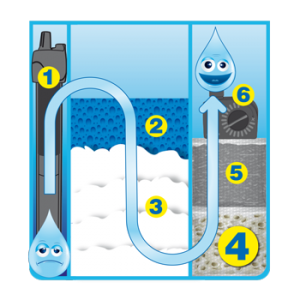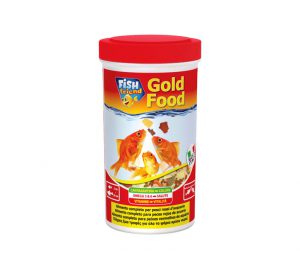
An aquarium with goldfish
Goldfish are the most popular of freshwater fish and one of the most robust and easy to manage. They are animals that like to live in groups so it is advisable to avoid inserting a single specimen into the aquarium. In fact, goldfish are social animals that love to move and group together.
The layout of the aquarium
Because of their nature and the fact that they can reach and sometimes exceed 30 cm in length, it is advisable to let them live in a fairly large aquarium.
Calculate roughly 60/70 litres of water for each fish, although it is good to know what type of goldfish you are buying because each type has its own characteristics and some traits. Once grown they require very large aquariums or, better, should be transferred to a pond.
In principle, start with aquariums with at least 60 litres and avoid overcrowding the tank, allowing the correct amount of space to each fish.
If they have the correct space and are well looked after goldfish can live up to 25-30 years.
Never use a glass bowl as a tank as the spherical shape tends to make it knock into the wall and above all do not let it live in an environment without a filter which is in fact necessary to oxygenate the water and filter it.
This choice would reduce its life by 80% and force it to live an unhappy life in an unhealthy and cramped environment.
If you decide to add other species to the goldfish request information from the dealer regarding possible issues of compatibility.
THE HABITAT OF GOLDFISH
Before buying goldfish, prepare and “activate” the aquarium.
Remember that when transporting a fish in a restricted environment it can only live for a few hours so if you still don’t have the aquarium ready, put the fish in a large bucket with water in any case treated with a conditioner.
Goldfish in the wild love environments with a little running water, such as ponds and pools rich in vegetation.
In the aquarium it is therefore a good idea to insert a number of plants and some stone or wood as decoration, seeking however to place them on the sides or in the centre to leave free space to allow them to swim around.
It is preferable to use real plants rather than plastic ones as they are able to partially absorb nitrates and ammonia caused by fish excrement and feed residues, contributing to the aquarium’s good biological cycle.
THE BOTTOM
For the bottom it is advisable to choose a coarse-grained substrate to avoid the risk of it becoming stuck in the throat of the fish as usually they love to dig at the bottom in search of food.
LIGHTING
Goldfish, being diurnal animals, require a regular night-day cycle. It is therefore essential that the aquarium is equipped with a correct lighting system with timer.
The absence of this cycle causes stress on the fish, while the lack of natural light for approximately 10 hours a day can also affect their colouring, as well as their vitality.
It is always necessary to avoid direct exposure to sunlight, which causes large changes in the temperature of the water and the proliferation of algae.
THE WATER OF AN AQUARIUM
Once the substrate is created, install the plants and having placed the decorations it is possible to fill the aquarium with tap water using a plastic hose.
Be careful to do this slowly, protecting the bottom initially with a lid or plastic sheet at the point where the water flow exits.
It is then necessary to treat the water inserted with a bio-conditioner to make it suitable for fish as, if distilled water is not used, remember that tap water suitable for humans also contains substances that are harmful to fish.
You also need to insert a liquid bacterial activator after a couple of hours that allows you to introduce the fish into the tank quickly.
It is in any case advisable to wait around 24 hours before introducing them. Alternatively it would be necessary to wait 2-3 weeks for the aquarium to activate normally, perhaps by inserting only one fish in it.
Before inserting the fish, check the pH, ammonia, nitrite and nitrate levels with the appropriate tests.
The pH must be between 6.5 and 8.25 while the level of ammonia and nitrites must be zero.
The nitrates level must be less than 20.
WATER TEMPERATURE
Ideally the aquarium water is at a temperature of around 24° C.
It is however possible to accustom the fish to temperature changes related to the seasons being careful not to drop below 12° as under that temperature they will stop feeding..
To prevent goldfish from reproducing keep the water at around 23° – 24° all year round (goldfish reproduce in spring when there is a rise in the temperature of the water in their environments).
THE AQUARIUM FILTER SYSTEM
The installation of a filter, external or internal, is fundamental to mechanically remove the larger particles such as excrement and food residues, and to biologically filter the water thanks to the “good” bacteria that develop over time in the filter.
Inside the filter insert in the correct order good filtering materials such as FILTERWOOL (3) synthetic fibre (3), cylinders for biological filtering such as CYLINDER FILTER (4) and CARBON FILTER (5) vegetable charcoal (5) thereby always ensuring crystal clear water.
Keep your fish healthy with a good filtering system proportioned to your aquarium combined with periodic checks.

GOLDFISH FEED
It is advisable to insert several goldfish in the aquarium so that they live in a group ensuring that they are all generally of the same size.
Then observe that the various fish feed regularly and that there is no specimen that prevails over the others, in particular over some of the weaker or shyer specimens.
For food use a complete feed such as FISH friend’s Gold food, administering 2-3 times a day a dose that the goldfish in your aquarium eat in 1-2 minutes.
TIPS
It is advisable to give the food if possible at the same time, always administering the feed in the same place in the aquarium.

AQUARIUM MAINTENANCE
It is important to keep the water clear and clean, with the correct levels.
FISH friend recommends changing 25% of the water weekly.
If instead nitrates exceed level 20, change half of the aquarium water.
When inserting the new water, treat it with the bio-conditioner following the dosage prescribed by the instructions for use.
It is important to intervene in particular when the water becomes cloudy because it is often a symptom of problems that can be resolved with a partial change of water.
Also remember to vacuum up with a pipe any dirt that has deposited on the bottom of the aquarium.
Every fifteen days if necessary prune the plants, removing the cut parts.
Weekly it would also be appropriate to help their growth by inserting into the aquarium a liquid fertiliser for aquatic plants.
ILLNESS OR DEATH OF GOLDFISH
If a goldfish dies, it should be immediately removed from the aquarium taking it out with a net or with plastic gloves.
It is important to check that there are no signs of illness by observing the other specimens.
If they seem sick, consult a specialist dealer for advice and clean the tank more frequently.
In particular be worried if you see wounds on the scales or small white spots on the body, as they could be signs of parasites, such as the white spot disease (caused by ichthyophthirius
multifiliis).
Healthy fish have a vivid livery and erect fins and behave in a lively manner.
